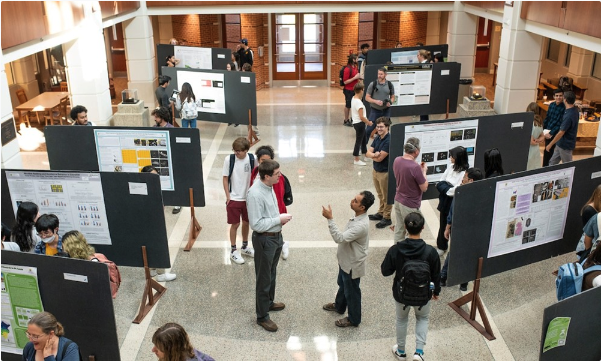Document Type
Poster
Publication Date
Fall 10-2020
Abstract
Quarries are anthropogenic landscapes that when abandoned, leave a blank slate in the environment for species to come in and repopulate the area. This gives way to primary succession, a process that re-vegetates areas devoid of soil. The goal of this research is to investigate where the abandoned limestone quarry at the DePauw University Nature Park is in terms of its successional phase since extraction stopped in 1977. Throughout the summer of 2020, plant species were identified along with the specific region and sub-habitat, the main sub-habitats being the temporary ponds, quarry spoils, talus slopes, flat limestone areas, and damp or low spots. Other information including plant form, life history, native and wetland status, and invasive rank was recorded for each species using the USDA website. Of the 98 species collected, 73% are native plants. Of the 27 non-native species, 7 have been identified as highly invasive, 2 are medium, and 1 is low. Nineteen of the 75 species with labeled wetland statuses are commonly found in wetlands, having facultative wetland and obligate wetland statuses. The majority of the species we identified are herbaceous in plant form and have perennial life history. According to an article by Girardelli et al. (2016) regarding assigning successional phases in limestone quarries, an area undergoing primary succession that is dominated by perennials is indicative of late phase succession while shrubs tend to replace herbaceous plants in later phases of succession. While the majority of the species are native, herbaceous, perennials, and have a facultative upland status, we do not yet know whether these species are representative of the total coverage on the quarry bottom. Moving forward with this information, a pilot study has been started as a basis for my research in the fall semester that will estimate species diversity in the quarry bottom as well as relate species diversity and composition to abiotic conditions.
Recommended Citation
Atkinson, Sophia; Borse, Diana; and Dudle, Dana, "A Preliminary Look into Regional Primary Succession in the DePauw University Nature Park Quarry" (2020). Annual Student Research Poster Session. 34, Scholarly and Creative Work from DePauw University.
https://scholarship.depauw.edu/srfposters/34



Comments
Sophia Atkinson, Diana Borse, Dr. Dana Dudle PhD
Department of Biology, DePauw University, Greencastle, IN
Supported by: DePauw University Science Research Fellows Program and Asher Office for Undergraduate Research